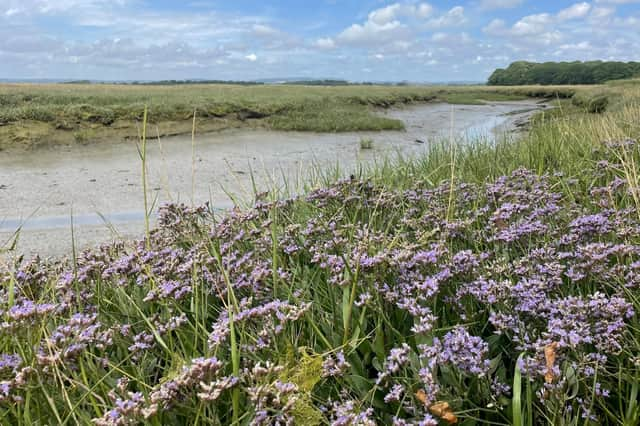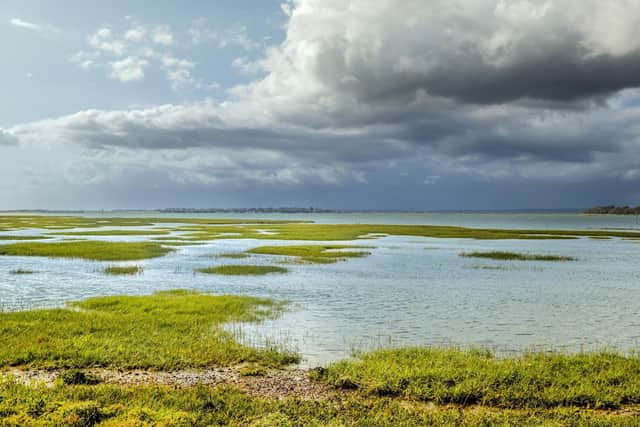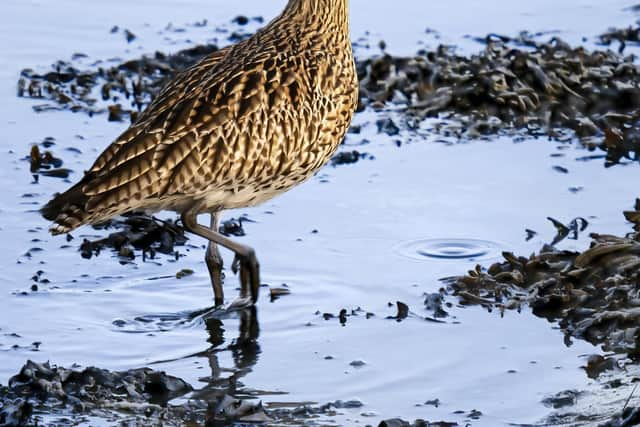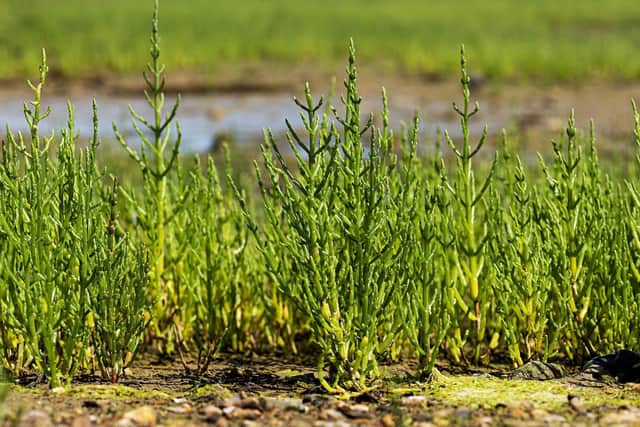The saltmarsh superheroes in our local harbours and why they're so important to save


Part land, part sea, its lower reaches obscured as the tide washes in, are swathes of super saltmarsh!
This habitat hero is fringed by mudflats; from a distance saltmarsh looks green and grassy, criss-crossed with tiny creeks. It is often overlooked by the casual observer. But our saltmarsh is a powerhouse in the fight against climate change, and that’s just one of its superpowers, here are its others:
Advertisement
Hide AdAdvertisement
Hide Ad1 – Biodiversity: Saltmarsh is a haven for so many species. As well as supporting plant, insect and invertebrate life it is a nursery for young fish and shellfish, a sheltered environment for them to safely grow. Chichester Harbour is globally important for many threatened bird species, and super saltmarsh is vital for these – providing a food source as well as safe nesting and roosting sites.


2 – Water Quality: Saltmarsh is a natural sponge, filtering run-off from the land and reducing herbicides, pesticides and heavy metals entering the harbour. It also absorbs some of the excess nutrients coming into the harbours and estuaries where it grows.
3 – Flood Defence: Stormy seas? Super saltmarsh takes the strain! The height of the habitat absorbs the energy of incoming waves providing natural protection to the shoreline. It’s a nature-based solution to the problem of defending land from sea.
4 – Climate Change: Saltmarsh is a superhero in the fight against climate change, locking away vast quantities of carbon each year. As well as absorbing carbon dioxide from the atmosphere, it buries or sinks carbon as new sediment is brought in on the tide. We might think of tropical forests leading the way when it comes to carbon, but one hectare of saltmarsh can store many times more carbon than the same area of tropical forest.
Advertisement
Hide AdAdvertisement
Hide AdBut our hero is under threat. The saltmarsh within Chichester Harbour has declined by 58 per cent since 1946 and we’re losing more each year. Saltmarsh’s adversaries include sea-level rise and being squeezed out by hard sea defences. The deforestation of tropical rainforests has been well-documented, but the loss of saltmarsh and other wetland habitats right here on our doorstep is not widely known, even among those of us living here.


However, the fight to save our saltmarsh has begun. Chichester Harbour Conservancy is leading a coalition of partners working to protect and restore this habitat hero.
Matt Briers, CEO of the conservancy said: “Chichester Harbour is one of the most important sites for wildlife in the UK and our saltmarsh is amongst our most precious of habitats. With the global fight against climate change forefront in everyone’s mind, we must work together to ensure this vital natural resource is protected, enhanced and restored.”
It’s not just locals that are starting to appreciate super saltmarsh; at the beginning of August the secretary of state for environment, food and rural affairs, Thérèse Coffey, paid a visit to a saltmarsh restoration trial on the shores of Chichester Harbour. She said: “The saltmarsh restoration trial in Chichester Harbour is an innovative and exciting approach to nature recovery. Saltmarsh is declining at an alarming rate; it has been inspiring to see this groundbreaking initiative to restore a habitat which is so important in storing carbon and mitigating climate change.”
Advertisement
Hide AdAdvertisement
Hide AdSo next time you stroll the shores of the Chichester, Langstone or Portsmouth Harbours, cast your eyes seaward to spot this green and grassy hero. Notice the birds, the plants, the rich biodiversity and reflect on just how lucky we are to have a real-life superhero in our midst.


Glasswort
A pioneering plant of saltmarshes, glasswort is often the first plant to colonise an inter-tidal area if it is high enough. Sometimes known as samphire, in the 16 th century it was burned and its ashes used to make glass – hence the name glasswort.
Sea Lavender
Throughout the summer months the upper reaches of saltmarsh may be swathed in the purple haze of sea lavender. It may not smell like the lavender grown in our gardens, but it is every bit as popular with bees, butterflies and moths. The sea lavender in saltmarshes is common sea lavender, but you can find similar species in garden centres!
Baby Sea Bass
The sheltered streamlets of saltmarshes make them ideal nursery areas for juvenile sea bass, as well as other fish species. Sea bass spend their first few years of life in these nurseries, growing up protected from predators and feeding on the abundant food supply. Incredibly, it takes 4-8 years for a bass to reach maturity, making the shelter of saltmarsh all the more important!
Curlew
Advertisement
Hide AdAdvertisement
Hide AdMany wading birds, ducks and geese spend their winters across the Solent and in Chichester Harbour, including internationally threatened species. Saltmarsh is nature’s larder, providing important food sources and high tide roosts for birds like the curlew. A large wader, easily recognised by it’s down-curved beak, this iconic bird declined by 48 per cent between 1995 and 2015. Protecting the wintering grounds of such birds is vital for the species survival.
Find out more about the work to protect and restore the saltmarsh at conservancy.co.uk.